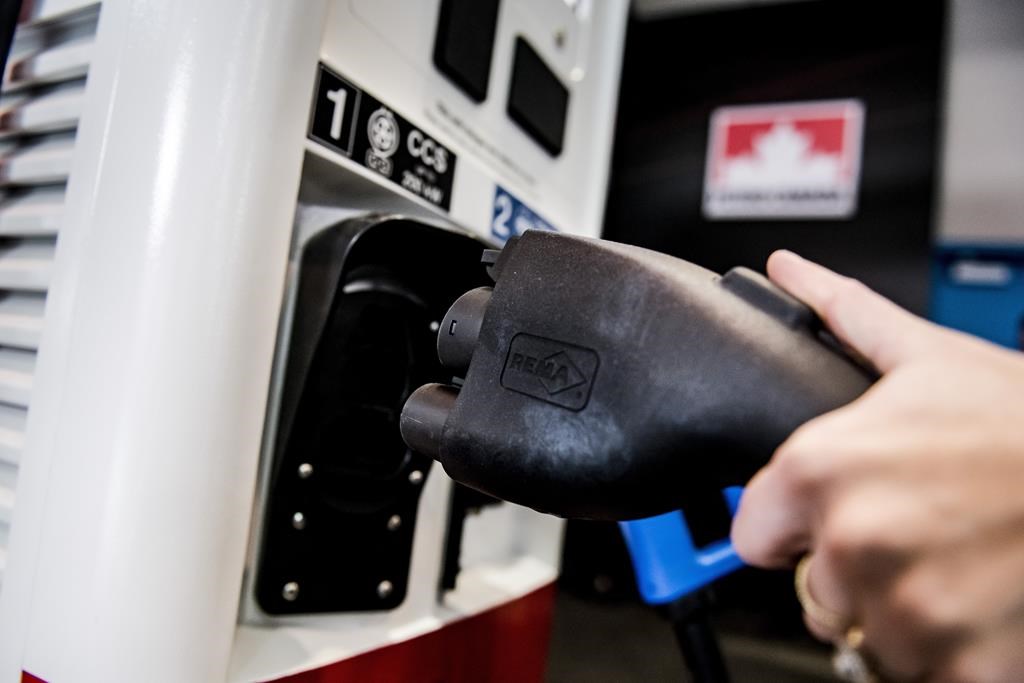B.C.’s emissions goals require diversity of solutions: expert

Posted April 25, 2024 6:53 am.
Last Updated April 25, 2024 6:54 am.
There’s no single solution to B.C. reaching its decarbonization goals, and one expert says the sooner we realize that, the sooner we’ll achieve our goals.
By 2050, the province is aiming to have reduced its greenhouse gas emissions by 80 per cent of what they were in 2007. By next year, they’re aiming for a 16 per cent reduction.
Nation-wide, a commitment to achieve net-zero emissions by 2050 has even been enshrined into law to hold governments accountable.
But Alexandra Tavasoli, an assistant professor of mechanical engineering at UBC, says if any of these lofty promises are going to be kept, the key is going to be a diverse approach.
She says there are three main ways to decarbonize: reducing demand, electrification, and fuel switching.
Reducing demand is the least invasive way to decarbonize, Tavasoli says.
“You don’t need to increase the amount of electricity you produce if everybody just started using less of it,” she said.
“Obviously, there’s a limit to that. The population is growing, everybody’s using more and more electronic devices every year and so it becomes a matter of efficiency.”
If everyone was able to reduce their electricity consumption by 25 per cent, for example, the implications for decarbonization would be huge, she explains.
Realistically, Tavasoli says only a 10 per cent reduction is feasible, meaning it cannot be the only method we rely upon to reach our targets.
While the electrification of our cars, homes, and industries is another tangibly useful step towards our emissions goals, it’s not yet the most popular method.
Across Canada, including B.C., Tavasoli says the emphasis remains on fuel switching, which is one of the easiest — but not necessarily most effective — ways to decarbonize.
She says this is because it’s hard for humans to break old habits when their alternatives require major innovation.
“There are a lot of regulatory barriers and engineering barriers to jump over when it comes to electrifying the economy.”
“Whereas humans have been lighting a fire under a pot for thousands and thousands of years. It’s a way easier engineering feat.”
In B.C. specifically, Tavasoli says biomass is commonly swapped out for fossil fuels to make energy.
“Whether it’s waste biomass from the forestry sector, it’s scraped from the forest floors, in pulp and paper making, or from sewage in wastewater treatment plants, you generally see about a 30 ish per cent reduction in greenhouse gas emissions per amount of fuel that you’re burning,” she said.
But while biomass starts as a less carbon-intensive fuel, Tavasoli cautions that due to increasing population size, any emissions savings earned can quickly be lost.
“Over time, since the Earth is like a finite-sized container, the CO2 emissions continue to accumulate, regardless of whether your barrel of oil is emitting 30 per cent fewer CO2 emissions,” she said.
In general, Tavasoli says she thinks British Columbians generally know what has to be done to achieve provincial targets, it’s just a matter of seeing it through.
“I think everybody is ideologically in line with the idea that electrification using low carbon electricity is going to have the largest greenhouse gas reduction footprint long term,” she said.
“But lifestyle change is going to go really far as well, especially in North America, we definitely consume more than our fair share.”
For now, Tavasoli says calls for action like the one BC Hydro put out recently are promising, and open up doors to people working on solutions like building retrofits or electric public transit.
However, she says she remains cautiously optimistic as promised changes crawl along, and the timeline for overhauling almost all of the infrastructure we rely upon in our daily lives remains ambitious.
“It’s hard to feel like a lot of action is being taken at once. But the moves I would say that have been made in the last 10 years, even towards pushing this kind of policy have been bigger than anything we’ve seen so far,” she said.
“They could always be bigger. But let’s not discount what we have, because government could change and we could have way less.”








